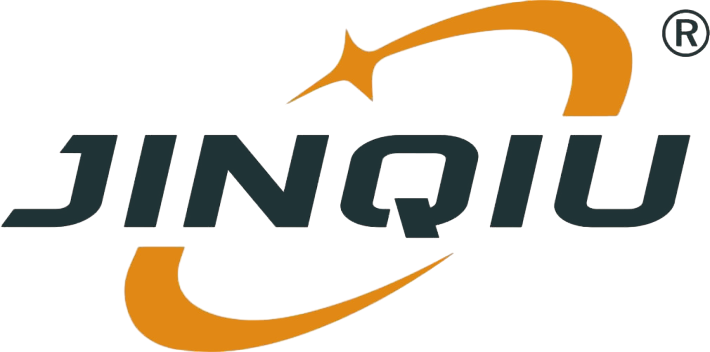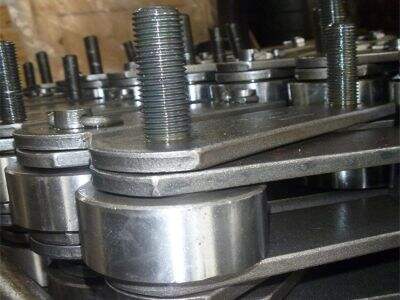Hello, friends! We explained about the solution of some minor issues that can arise in stainless steel conveyor chains. Our company, JINQIU CHAIN, makes this type of special chains that have been used to carry items in various occasions, such as factories and warehouses. Knowing how to maintain them is crucial to keep everything running smoothly.
The Most Common Conveyor Chain Issues
Let’s consider some issues that can occur in conveyor chains. Recognizing these issues can help you detect them early on and correct them before they turn into larger issues:
Chain Wear & Elongation Chain wear and elongation: The elevator chain sprocket chain is in motion and rubbing against the conveyor for a long time, so it can get worn and elongate over time. Traditionally, this type of wear and elongation occurs naturally, but it can occur more rapidly if the chain has to transport heavier loads or if it is not cared for appropriately. If a chain is overstretched it can result in the conveyor not functioning correctly or coming to complete failure.
Corrosion and Rust: The resistance of stainless steel is greatly superior to other materials. Nevertheless, it is still not entirely safe from rust. If the chain gets wet or exposed to certain chemicals, it can start to corrode. Humidity and other environmental elements can also accelerate that process. Just make sure you keep an eye on the chains and keep them clean and dry.
Chain Binding and Slipping: Sometimes the chain can bind or slip if it is misaligned or dry. It is highly possible that the conveyor is having to work harder to operate in a way that makes at the very least makes for poor operation, and at the very most prevents problems that could ultimately lead to damage. A squeaky bike chain can be a sign that the bike chain needs some attention.
Why Chains Wear and Stretch
Chains naturally wear and stretch as they move and work. But there are some things that can speed this process up. For instance, it can add additional pressure on the chain, if it carries heavy loads. If there is too much friction because you are not lubricating the chain properly, it can also cause faster wear. If a chain stretches excessively, it can affect the function of the conveyor, or cause it to stop working altogether. That bucket elevator chain link why checking the chains regularly is so essential.
How to Prevent Rust and Corrosion
Minimizing exposure to extended pin chain moisture and chemicals is key to preventing rusting of stainless steel conveyor chains. Before we go into details, here are a few tips that can help you in preventing rust and corrosion:
Regulate Humidity: Ensure you regulate the humidity levels in the environment that houses the conveyor chains. Rust is also able to form at a much faster rate in a humid environment.
Avoid Corolla Corroding the Chains: Clear each chain of dust and dry off to eliminate corrosion. Make sure these are all completely dry before reusing.
Apply Special Coatings: The application of protective coatings can protect the chains from the elements. Stainless steel that is more resistant to rust can be used as well; that will prove handy in the fight against corrosion.
Binding and Slipping: Quick Fixes
If the chain is stuck or slipping, it might not be in the right alignment, or it will have to be lubricated. Here’s how to address these problems:
Inspect for Dirt and Debris: The first step is to examine if there is dirt or debris that may be causing the issue. Cleaning this stuff off can let the chain move more smoothly.
If the chain is misaligned with the cog or sprocket, it may need to be adjusted. This is to ensure that everything is aligned properly to avoid binding.
Give it some lubrication: Last thing you want to ensure doing is give chain some lubrication. Use a product specifically made for stainless steels and conveyor chains. Doing so will minimize friction as well as ensure that the chain functions properly.
How to Lubricate a Conveyor Chain
Above all, lubrication is critical to enable the conveyor chains to operate efficiently and have a longer life cycle. Here are steps to remember when you are putting on lubricant:
Use the Appropriate Lubricant: Choose a lubricant which is specially designed for stainless steel and conveyor chains. This will make sure it does its job well.
Rollers: Apply lubricant on both sides of the chain links and rollers evenly. Until then, investing in all aspects of the chain will help it run better.
Don’t Go Overboard: Too much lubricant can attract dirt and debris, so be careful — use just enough. Using the suggested amount on the product can help avoid buildup.
Clean First, Lube Second: Always give those chains a good rinse before applying fresh lubricant. This assists in removing any dirt or old lubricant, which may be hindering the mechanism.
Conclusion
Just like the other mechanical components, your stainless steel conveyor chains should also be looked at for routine checking and maintenance. It is possible to make them work better and last longer, by knowing the common problems and how to solve them, maintaining the cleanliness of the chains and applying the right lubrication. In the long term, preventative maintenance is much better for your finances. We are here to help you if you have any questions about your JINQIU CHAIN conveyor. Thank you for reading and happy conveying!

 EN
EN
 AR
AR
 DA
DA
 NL
NL
 FI
FI
 FR
FR
 DE
DE
 EL
EL
 IT
IT
 JA
JA
 KO
KO
 NO
NO
 PL
PL
 PT
PT
 RU
RU
 ES
ES
 SV
SV
 TL
TL
 ID
ID
 SL
SL
 VI
VI
 TH
TH
 MS
MS
 LA
LA






